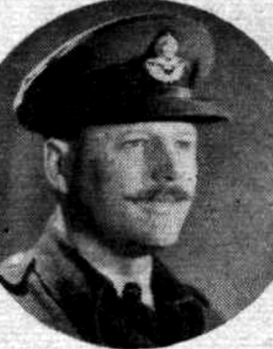On 13th July 1941, No.18 Squadron moved from RAF Oulton to RAF Horsham St Faith in Norfolk. This was a popular move with everybody concerned.
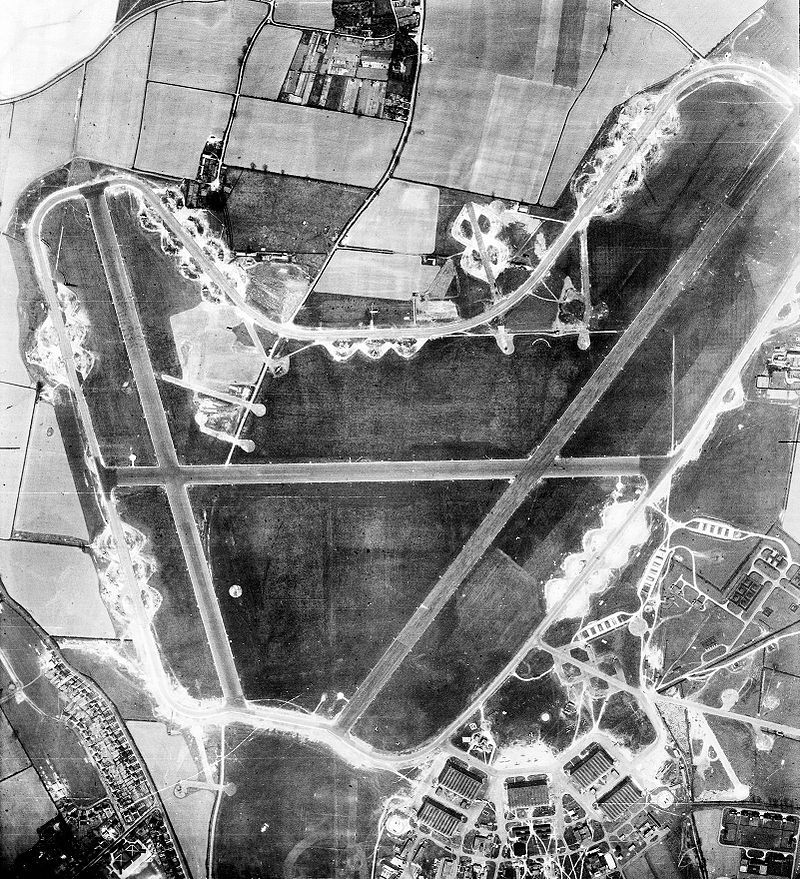
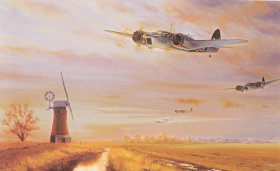
This Airfield was 1st Developed in 1939 & Officially Opened on 1st June 1940 as a Bomber Station. It had been Built pre-War & had 5 No. C-Type Hangars, permanent Brick & Tiled Buildings with Central Heating and a high standard of Domestic Accommodation. The 1st Aircraft there were Bristol Blenheims Dispersed from No.21 Squadron at RAF Watton, East Dereham in 1939 but the 1st Operational Aircraft there were Fighters: Supermarine Spitfires of No.19 & No.66 Squadrons from RAF Duxford. Hangars, Technical & Domestic Buildings & Grass Runways were Constructed. The Officers’ Mess & 3-Picket Hamilton Forts are amongst the Structures that survive.

The Pickett-Hamilton Fort was Designed to be lowered into the Ground while it was not in use, as such it would be inconspicuous & would not interfere with the Passage of Taxiing Aircraft or other Vehicles. The Fort could be raised to about 2ft-6ins (0.76M) above Ground Level where it would be a physical impediment to Aircraft & Vehicles and from where a small Crew could Fire with Rifles or light Machine Guns
Designed to be manned by 2-Gunners (although in pre-Hydraulic Operation it took 4-men 4-secs to raise the Fort to its Operating position), the whole affair was lowered into the Ground & accessed by the Drain-like Hatch in the Roof. It would be raised in the event of an Attack

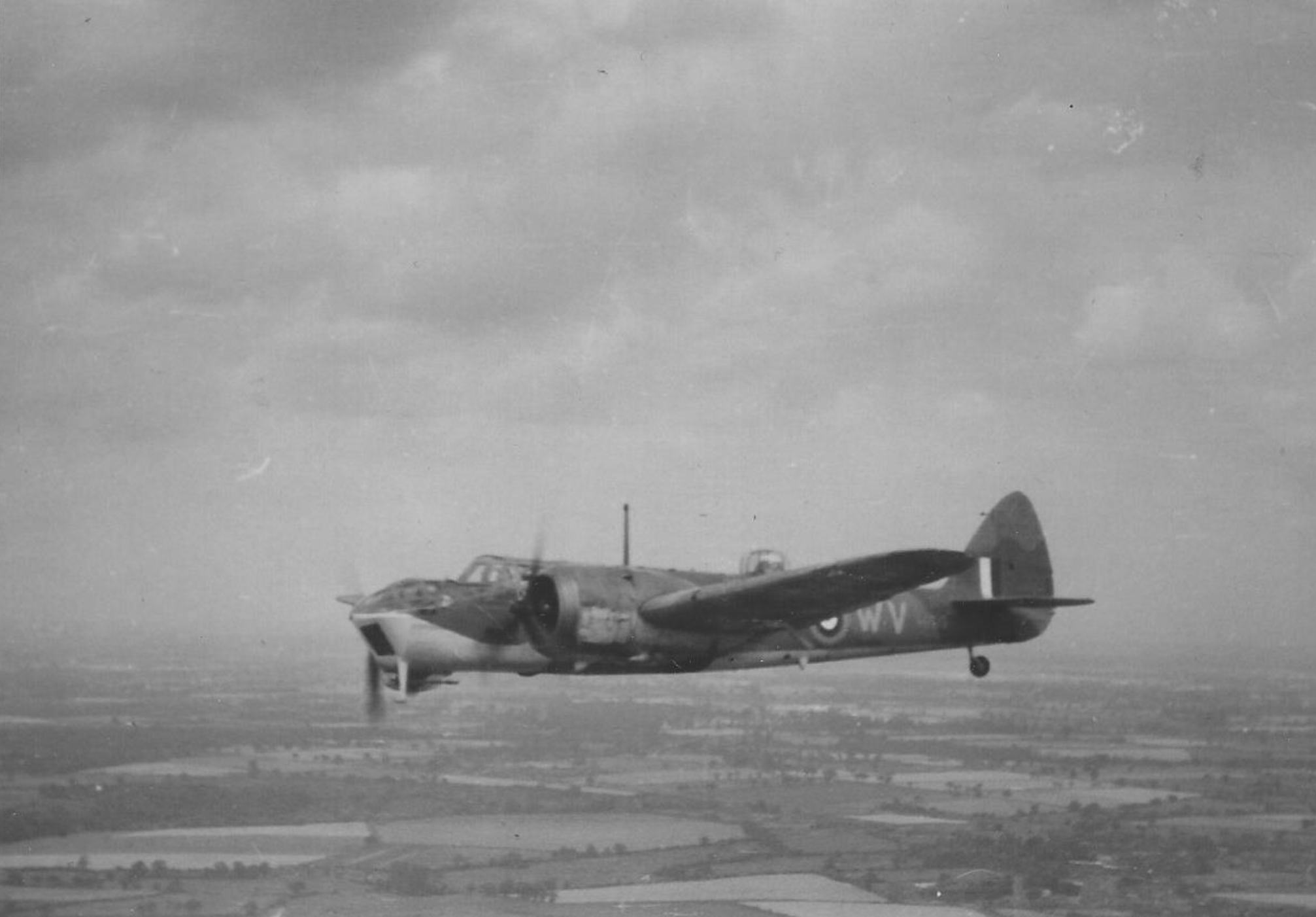

Then came the Rotterdam, Operation on 16th July 1941. Ralph Millns records it thus: ‘Low-Level Attack on Shipping in Rotterdam Harbour – Hit 4,000-Ton MV. 2.40 [2-hrs & 40-mins].’
This is really what I came for! I had the privilege of Interviewing a Pilot on the Rotterdam Raid, in which my Cousin was Killed & someone who had an extraordinarily good memory! Over the course of my several Interviews with Tom, I extracted every detail I possibly could! I will now assemble these Memories in a chronological order of the Raid. Some of the following Recollections have already been Incorporated into the narrative of the Raid, but for reasons of continuity & clarification, I have included them in this Biography. Perceptive readers may pick up a variance in the actual words spoken by Tom. This is because I recorded several versions of the same incidents – better to have multiple coverages than miss something out! – Rusty Russell
Tom recalls: ‘Now, what happened that morning, Wg Cdr Tim Partridge, CO of No.18 Squadron was called by the Station Commander & he Flew over to No.2-Group Headquarters – the Meeting was at RAF Watton & we all sat around & waited – you know, the CO’s gone to Watton – what’s this all about? Or Why? Perhaps we are going to have a day off? Anything! We didn’t know!’
This shows how Tight the Security was.
Tom continues: ‘So we were all hanging about in bright Rooms & just wondering why he went. Then he (Tim) came back & there was a great bustle of Activity & we were told, ‘Right, up to Briefing!’ We gathered that Tim had had a Meeting with other Squadron Commanders & that they had all worked it out between them. So then there appeared a big rough Plan of Rotterdam, on one Board & I think another one would have been the Route Out, generally. So all we knew was, you will be No.2 to the Commanding Officer immediately to his Right, in Echelon Starboard & you’re Flying here & you’re Flying with other people. They told us what the Bomb Load was & that the Operation was to Bomb some Ships in the Docks at Rotterdam. We’re going to take off at a certain time. The Met Man came in just after the details, to tell us what the Weather would be like.
We were going to take off & Formate round the Aerodrome & then go to Wattisham, where we would join up with another Squadron who were the 1st Wave.’
When I brought up the subject of Cable-cutters, it was clearly not one of his Memories from the Rotterdam briefing given at Horsham St Faith. Perhaps they only mentioned this at the Watton briefing? I asked Tom: ‘Thinking about those great big Crane Cables – can you imagine that a Blenheim Cable-cutter could go through one of those & Chop it? Because you had them fitted to your leading Edge. Did you have any confidence in them?’ – Rusty Russell
Tom thought for a moment & replied: ‘ I, er, no! I did at one time, but they were for Cutting -‘ I quickly interjected: ‘Cheese?‘ After the Laughter had subsided, Tom continued: ‘Barrage Balloon Cables, which I would imagine are a bit thinner than those Crane Cables‘. ‘Well’, I replied, ‘On the Rotterdam Raid, one Chap did cut through one, but my Cousin also hit one, unfortunately & it pulled a large chunk of his Wing off. So it seems unlikely, doesn’t it?’ Tom added: ‘Well, I wouldn’t imagine it – Cutting it – I mean, you are going to Hit it very fast, so you’d have to really be right in the Jaws of the Cutters, wouldn’t you?’ I agreed: ‘That’s right! In fact, it was on the Inside of the Engine, where the Wing is strongest & there was a Cable-cutter there & Sgt John H Wotherspoon (21 Squadron) Cut it!’
Wotherspoon’s return from the Rotterdam Raid: ‘Yes, I did know that he was the one who went through the Crane Cable. His Cheese Cutter! It went between the tip of his Airscrew & his left, here. [That close! Compare the strength of the inner Wing here with the outer 4-ft torn off my Cousin’s Aircraft.] He got Telephone Wires & Hay in the Tailwheel, but I’m not sure that he collected the Bricks! He grazed the Top of a Chimney. But his Flying was absolute Precision. They were very, very good: Mad as Hatters, difficult in a way & as Irish as they come. But not irresponsible: not Mad in that sense – certainly not on Duty. Yes, I’m sure they enjoyed Operations.’ Another Wotherspoon Fan was Jim Marsden. ‘He could handle it’, Jim emphasised. ‘He was an Expert at Low Flying.’
I asked Tom to clarify the method of Departure: ‘Can you tell me when you had these Big Formations & you were taking off on Grass Airfields, did you take off in Loose Formation, or did you take off Singly?’
Tom confirmed: ‘Singly!’ ‘Thank you’, I replied. ‘Because when I wrote the book, I thought, now, what did they do? I reasoned that if you’ve got a full Load, a 16,000-lb Aircraft & trying to take-off in Formation, that would be dangerous! So, 5-secs Streaming? Or 10?’ Tom‘s answer was emphatic:
‘No – you’d wait until the Aircraft in front had become unstuck & had got to the end of the Aerodrome or Runway, just so that his Slipstream wouldn’t really upset the next one’s Take-off. The Leader would Fly slowly around the Airfield until they all came up & got into Position. I seem to remember, there was a great deal of Aircraft went off like this – or more than usual. I also remember meeting another large Formation [the 1st-Wave]. But I wasn’t just sort of sitting there, watching, or working it out – what I was doing was concentrating on doing my Job. That was keeping really good Formation on Tim so that other people could keep good Formation on me. It’s what you do, really. But I was conscious of a lot of other Aircraft in the Sky & us all meeting up overhead Wattisham‘.
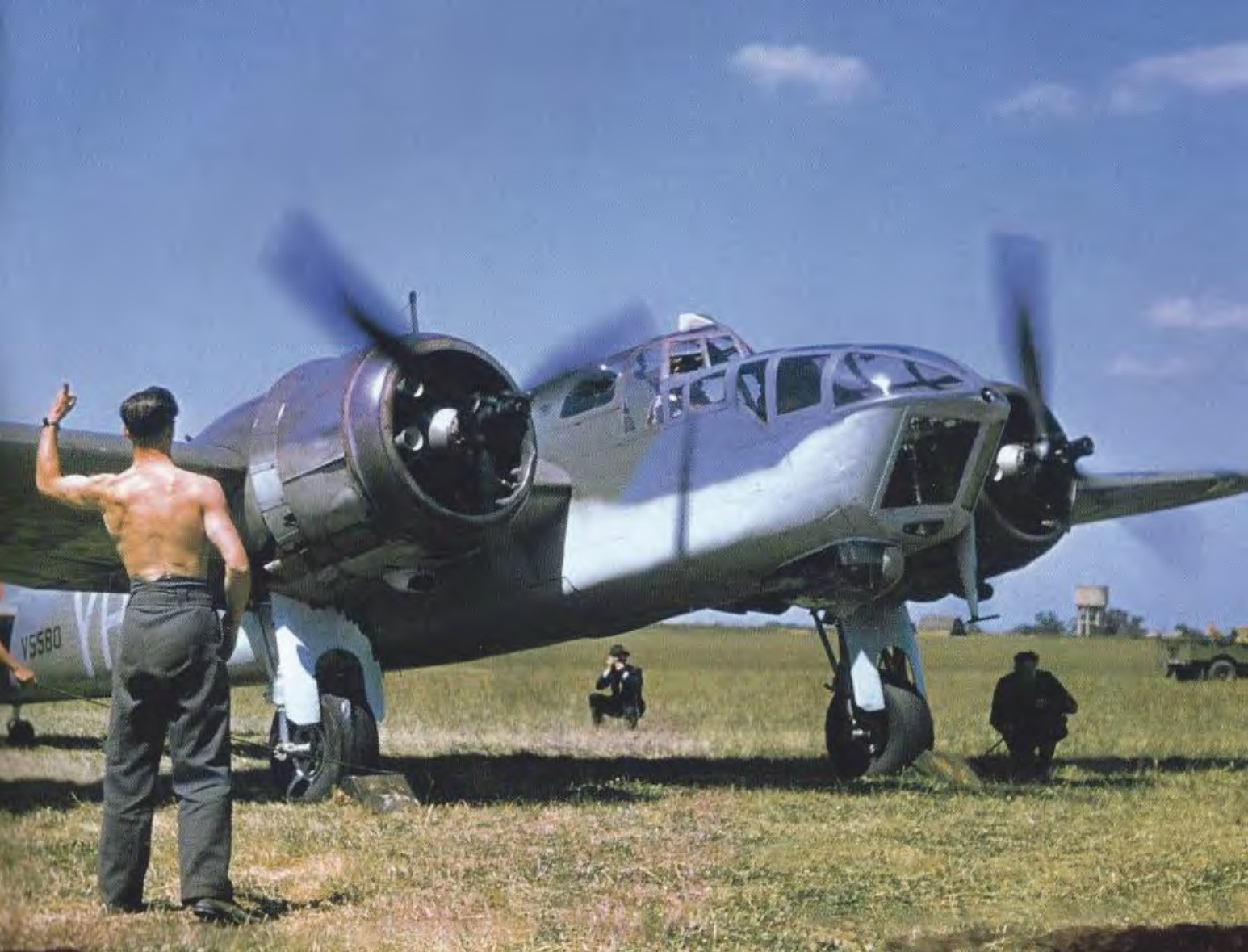
Blenheim V5580 (YH:X), the Lead Aircraft in the 1st Wave on the Rotterdam raid of 16th July 1941, running up at Watton on 4th July 1941, Crewed by Sgts Taylor, Newman & Spriggs of 21 Squadron.
Time & time again, Tom stressed how much of his concentration was spent on keeping good Formation – there was very little opportunity for Observing, amongst other things, the friendly Dutch Waving their Support for the Blenheims. This Luxury was mainly the Reserve of the W/Op/AGs! Tom recalls the Transit:
‘Occasionally, Ralph Millns would say, yes, we’re right on Course & so on. We would be down Low over the Sea & you’d have an eye looking for the Enemy Coast. The Enemy Coast came up & I would imagine – I can’t be specific – but I’m certain Ralph would have said, ‘we’re Hitting the Coast at the right place’. We would go across & then I would be waiting for Tim to start his turn to Port – which he did. Then we would get a little bit Loose because we would be looking – even though we were very Low – ahead to the Horizon & you would suddenly see all the Cranes & things in the Docks. So you are making sure that you keep as Low as you can, but without going in, but also, you’re really searching these things for some Sign of where your Dock is.’ The Attack Phase is understandably still clear in Tom’s mind:
‘Ralph was looking out, forward & said, ‘Right, there’s our Ship over there! On the far side of the Waterway’. I believe Tom Overflew Maashaven (Inland Vessels), then Katendrecht Havens 1 & 2 (South Bank), before crossing the New Waterway (Ship Canal) & Bombing his Ship in Dock 28, Moored up on Westerkade. So we belt up over it, to Bomb it. I knew we Hit it! That’s how it is! You hadn’t got time to think about it or Analyse it.’
I asked Tom: ‘What were you like at estimating the Tonnage of Ships during the War? Were you trained? Did you have your own principles?’
Tom replied: ‘No. There was no Special Training. You estimated what you thought about it, and if you had Photographs, then other people estimated whether you were right or not & how accurate you were. But you never did know – especially if you Sunk it! There was a fair amount of Flak about, in places & you really concentrated on making sure it wasn’t a wasted effort, with your Bombs missing the Target.’
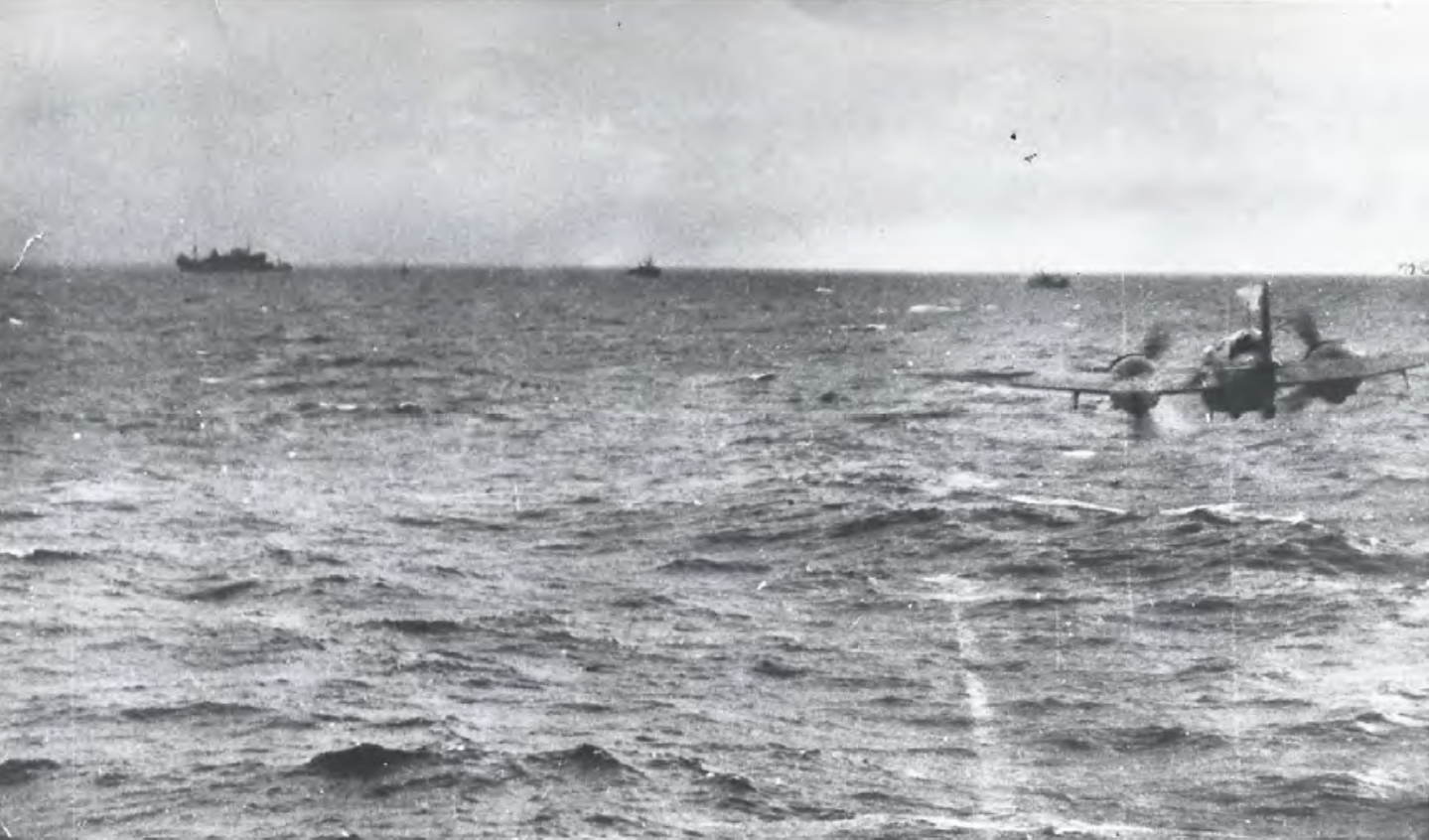
‘I went out between the Masts of that Ship – so Low, below the Deck of the Ship, that I couldn’t see the Flak-ships the other side & they couldn’t see me either. So I went up between the Masts of this Ship, to Bomb it & I suddenly saw a Flak-Ship right the other side, in my way! Now, if I’d turned, either way, he’d have Shot me from underneath – poured a round into my Belly, so that was no good. So I really took him Head on – I shoved the Nose right down & went Flat out for him, as though I was going to Crash straight into him. Damn it! So I thought, well, it frightened me enough, so I’ll frighten the Hell out of Them! I put my Nose down & went straight for this thing, missing it by Inches, Firing off my Browning – you know, the Pilot had one Browning on the Wing, that’s all. So I whipped over them & got away with it.’ Well, not quite – 3 of the Formation, including Tom’s Aircraft (Z7308, WV-Y) were seriously Damaged by Flak, one also hitting the Mast of the Merchant Vessel. Tom’s Observer, Ralph Millns, coolly took a photograph as they Flew over their Target.
Scotty recalls:
‘On the Original, you could see the Swastika there; Machine-gun Posts there; these are all Flak-ships, as you can see. At home, hanging on the wall very discreetly is a bit of the Wing of that very Aeroplane; it was Hit by Flak & when it was repaired, I got the Mechanics to cut it out & they gave it to me. The Aeroplane was out of it for a week or 2 & then we did an Air Test on it & went back on it.’
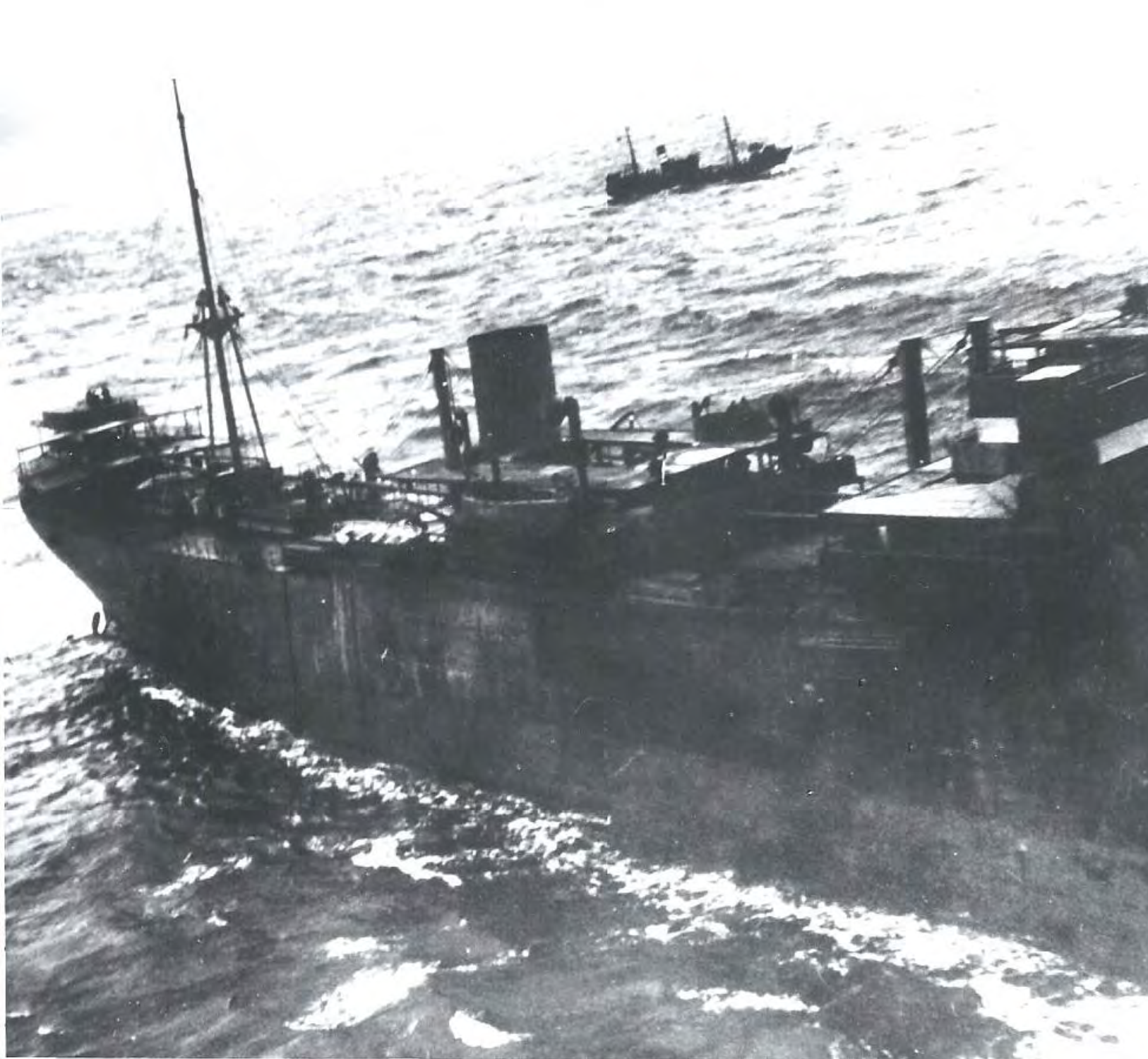
Very Low over the Oranjefontein in Waalhaven (South Bank of the Maas) on 16th July 1941 – note Flakship Vorpostenboot Vp 1107 being Manoeuvred in the Middle Right of the Picture. A W/Op/AG‘s view of Waalhaven after the Crew’s Bombing Run on 16th July 1941.
Into the Valley of the Shadow of Death – 14th September 1941. No.2-Group’s bread & butter: Tom Jefferson, Ralph Millns & Scotty Scotney running in to Attack a 4,000-Ton Merchant Vessel, which was Escorted by 6-Flak-Ships. Z7308 (WV-Y) was seriously damaged by Flak but Limped back to Base. Scotty still has a piece of the Wing – This close-up Shot of the 10,000-tonner that Tom Jefferson Attacked was taken by his Observer, Ralph Millns. The harmless-looking ‘Trawler‘ is actually a Flak-ship, one of 6 intent on Shooting down Blenheim Z7308 WV-Y
On the extreme right of the Formation & on Tim Partridge‘s immediate right, Tom Jefferson lined up on his Target – a Ship on the North side of the New Waterway. Fifty-two years after the Rotterdam raid, Tom’s Memory was still vivid: ‘I remember being No.2 to Tim Partridge & had to keep Formation on him so that half my attention was focused on that & the other half was spent looking at the Harbour, any Flak Concentrations & so on. Then I saw my Ship, Moored on the far side of the River; so I went down to Bomb that, right in close; & as I came over the Top of it, my impression – which I’m sure is still, right – was of an area around the Docks which had been Bombed by the Germans in May 1940.’ This ties in well with the estimated Location of ‘Dock 28‘. However, the ORB Records Hits on a 2,000-Tonner, while Tom’s Observer, Ralph Millns, claimed a 4,000-Tonner. Tom explains: ‘I couldn’t swear to the size of the Ship, but I know I Hit it & I could see Smoke coming up. If Ralph said “4,000” – I’ll tell you what: that’s more likely right!’
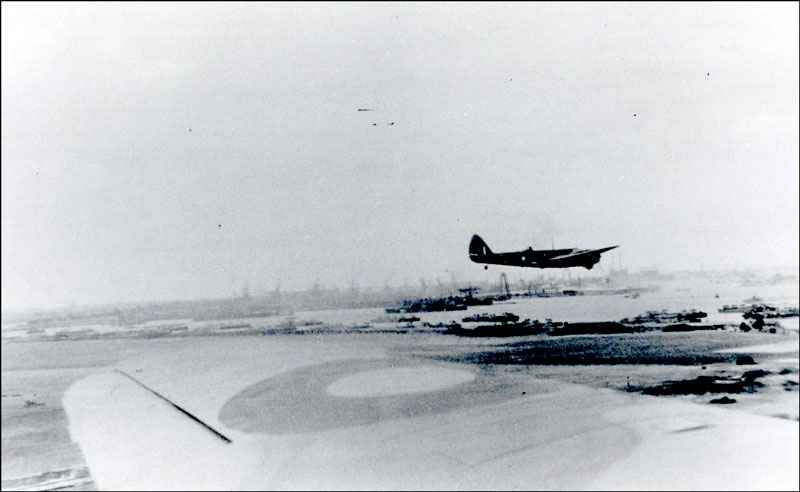
The desperate Last Moments of Tim Partridge & his Crew are Tragic enough to imagine. But the recollections of Tony Aldridge are bizarre, to say the least; & not only from my point of view but also from that of Tim’s Widow, Mary. ‘The last thing I noticed’, Tony recalls, ‘we were in a Port Turn& I looked up & just on my right, quite close in, was this Aircraft. This character was smoking a Cigar – it was strictly forbidden to Smoke whilst Flying – but we did, by the way. The smell of Fumes – well, we did, nevertheless. It must have been Tim Partridge – must have been – it couldn’t have been anyone else & I know he was Smoking. I suddenly took a 2nd Look, just as we were over the Middle of Rotterdam; & there was this terrific amount of Flak – it was absolutely Solid – & they seemed to be getting more than we were. What is glued in my memory is that he was calmly looking Dead Ahead & Flying this thing, his Head quite well back; & I suddenly looked again & noticed that the whole Aeroplane was a Holocaust of Flame. It was so strange, because he’d got this Cigar in his Teeth & he must certainly have realised that the Aircraft was just one Cauldron of Fire & he was Flying it as if nothing had happened. He didn’t seem to be Blinking. Then, quite slowly, the Aircraft Banked over to the Left & went into quite a Steep Spiral Dive. He went splat into the Middle of the Town – I know it was in the middle of the Built-up area – & there was a great Big Explosion when he Hit: a great big burst of Flames & Debris.’
Scotty Scotney, who was Jeff (Tom) Jefferson’s WOp/AG & in the No.2 position on Tim Partridge‘s immediate right, wrote me the following Letter prior to our in-Depth Interview: ‘Having left the Target Area & whilst returning over the Channel [Southern North Sea], I clearly recall my Observer, Ralph Millns, talking to ‘Jeff’ Jefferson & I remember the Conversation coming as a shock to me. The substance of it was that my Observer had seen Tim Partridge’s Aircraft Roll over & Crash into the Bank of a Canal – I remember vividly a remark that a Red Glow was clearly visible in the Belly of the Machine as it Turned Over & Hit the Ground. No one could have Survived the Crash. The Loss of our CO was a shock to me: I remember him with Affection as a Tall, kindly, quiet, Gentlemanly man. I certainly experienced a sadness, a sense of Loss & the beginnings of Fear for subsequent Operations. Wg Cdr Partridge’s Aircraft was the 1st of 3-Aircraft to be Shot Down whilst Flying in close Formation to us.’
Further controversy was added to the last moments of Wg Cdr Partridge & his Crew, when Hans Onderwater wrote the following letter to Tim’s Widow, Mary: ‘Shortly after Bombing the Docks,’ he wrote, ‘the Aircraft “WV–M for Mother” was hit by Ack-ack & started to Pour Smoke from the Port Engine. According to Eye-witnesses, the Pilot 1st tried to Force-land his Aircraft in a Park with a large Playground. When he noticed people rushing for Cover, the Pilot pulled up the Aircraft & tried to gain Altitude again. Whilst doing this he had to Fly sometimes between Roofs on 1-Engine. When the Aircraft was high enough to circle, the Pilot must have seen the “Noordsingel“ Canal. It is believed that he tried to Land in the Canal since the Aircraft was now Burning. During his approach to the Canal, the Starboard Wing hit the Roof of the Courthouse & then Crashed next to the Canal on the Lawn; the Plane Exploded & immediately was a Burning Cloud. Some people tried to come nearer but due to the immense Heat, this was impossible. It is believed that the whole Crew died instantly when the Plane Exploded. The people I talked with are 100% sure that the Crew sacrificed itself to save Civilians from being Hit by the Aircraft. For this reason, the 1st Monument & later the Stone one were erected by the people who lived in that part of Rotterdam. They celebrate their War dead every year on 4th May at the Site of the Memorial. I think Mary that you – & the relatives of the other 2-men – can be proud of Tim & his Companions. They saved many people by sacrificing themselves.’ At a very late Stage in my research, I was lucky enough to Interview the Pilot of the Blenheim Flying in the No.2 position to Tim Partridge. Tom ‘Jeff’ Jefferson was well placed to Observe exactly what happened to his CO.
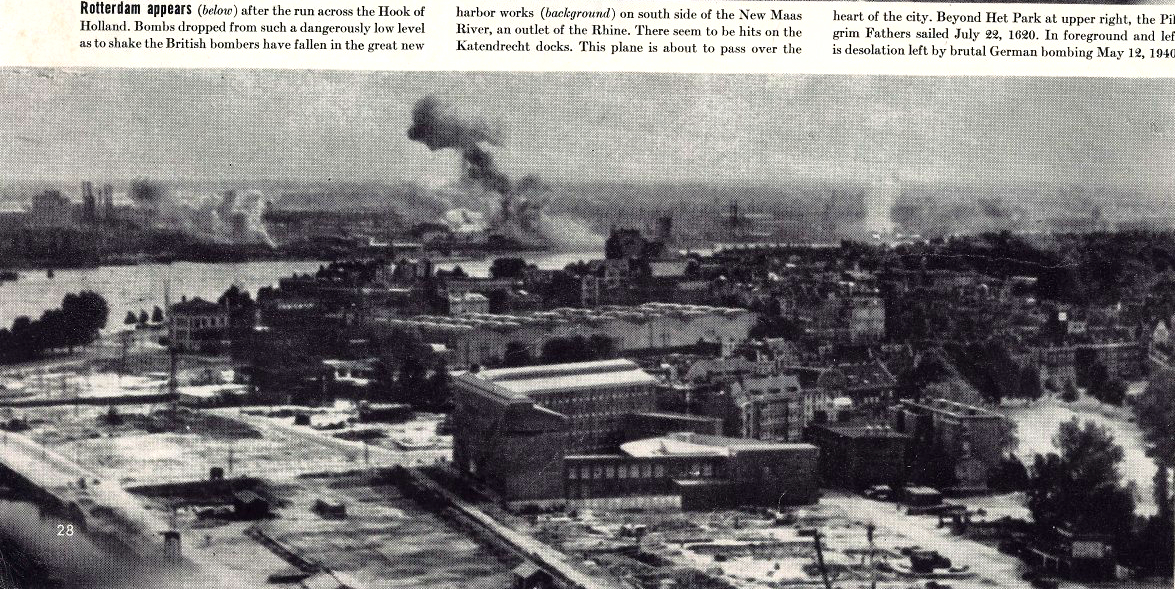
The Pilot of the Blenheim Flying in the No.2 position to Tim Partridge. Tom ‘Jeff’ Jefferson was well placed to observe exactly what happened to his CO. I took the opportunity of pumping him on several occasions for his Rotterdam memories, particularly Tim‘s Crash, so this version may vary slightly to that recorded under Tom’s Biography: ‘I could see the Flak going straight into the Aircraft & then it seemed to catch Fire inside; & there was a great stream of Fire & Sparks, starting from the front & going back inside the Aircraft & enveloping poor old Dvorjetz [Tim’s Observer]: I could see him struggling in there.’ At this point, Tom veered to the right, to Attack his Ship in ‘Dock 28‘ – Westerkade. He then regained Formation on his CO, shortly before Tim Crashed. Tom continues: ‘Suddenly Tim Partridge started to turn over to the left & go down. As he passed underneath me, I gradually drew ahead & didn’t actually see him go in.’ I was interested in any clarification of the ‘Cigar Incident‘. Tom has this to offer: ‘No, I don’t remember anyone sitting up smoking a Cigar, but there’s something about this that Rings a Bell. I wouldn’t put it beyond Dvorjetz – he was that sort of Chap – he could well have done it.’
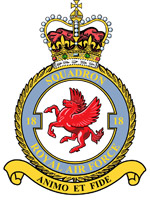
Tom’s W/Op/AG, Scotty, captured the Transit & Attack for posterity, with some excellent photos, using his hand-held Leica camera. The euphoria of scoring direct Hits on his Ship was quickly dissipated, as Tom recalls: ‘I remember joining up with Tim Partridge when he was in real trouble. I could see the Flak going straight into his Aircraft & then it seemed to catch Fire inside. There was a great stream of Fire & Sparks & things going back inside the Aircraft & enveloping poor old Dvorjetz [Tim’s Observer]. Then they turned over, disappeared under my Port Wing & went straight in. This was a really horrible sight, you know. I knew Tim had gone in, but I didn’t see him actually hit the Ground. I was dodging Buildings, you see.’
The withdrawal Phase is a well-preserved memory. Just about the time that Tim Partridge Crashed into the Noordsingel Canal, Tom received a hail of Bullets from a Motorcycle & Xidecar combination. As he returned Fire with his Browning ‘for all I was worth’, he was struck with the image that the Sidecar was the ‘wrong way round’! He continues:
‘I remember Flying up the Main Street of Rotterdam [such as it was, in the middle of the Bombed-out area devastated by the Germans on 14th May 1940, or a big wide Street. There was a Building, like a Bank on my left, with a Dome on the top & there was a big Weather Vane, which was a Horse, rearing up – this was above me.’
It would appear that Tom Flew up the Coolsingel, between the City Hall/Post Office/Exchange Building combination & the St Laurens Church – the only 4 major Buildings to survive the Bombing in 1940. I believe that he mistook the golden ‘Angel of Peace‘, with up-stretched Wings, for a Horse (Pegasus), rearing up!
After passing these Buildings, Tom Flew ‘right down across a lot of Greenhouses, as Low as we could get – just like the Greenhouses here, at Guernsey.’ He added: ‘The thing was, now, to get yourself Out.’ Tom recalled that the generally accepted, if unwritten, procedure at that time was that, if anything happened to the Leader of the Formation, his No.2 would take over. So he found himself in the Hot Seat, as a Sergeant, leading the 2nd Wave back to England. He explains his position: ‘Well, with Tim going down, I had to take the Lead of what was left of the 2nd Wave, to be able to Formate on me & come back.’
I asked Tom: ‘Were you nominated as Deputy Leader?’
Tom replied: ‘Well, I was his No.2, and that’s what it meant. No one said you’re the Deputy Leader! In later times, when I was in the position of giving the Briefing & I was Leading, I would always say, No.2, if anything happens to me, you take over & bring the Formation back. I remember telling you about coming back from Castelvetrano.’ I will be covering this amazing event later. Like most others on the Rotterdam Raid, Tom has vivid memories of those Greenhouses:
‘I was right over the top of those – that must have rattled the glass quite a bit! As soon as we were clear of the Flak area, I throttled back & we started looking for any of the other Wave & they were looking for me! A number Formatted on to us. When we got over the Coast, we were looking for the Rendezvous Point, where our Fighters would proceed to Escort us back. There were some Me 109s around, but while I was busy doing other things, I left that to Scotty! Then we caught up with the Fighter Escort – the Fighter Escort engaged the Enemy Fighters & we didn’t see them anymore.’
On 19th July 1941, Tom was Commissioned. I was at a loss to understand why it had taken so long for the RAF to spot his Officer Qualities, so I asked Tom for an explanation. Tom confessed that he was Offered a Commission at No.5 FTS, Sealand, in November 1939. ‘Why did you turn it down?’, I replied. ‘I don’t know’, Tom confessed, then adding this explanation:
‘I was very friendly with an Instructor, Flt Sgt Marshal. He was a helluva nice Chap & I wondered why he never wanted a Commission. It was one of those silly things. He came over to me & said: “Look, would you like to be put up for a Commission?” I then prepared a return. But I thought, well, I’ll stay with Ralph & Scotty & old Marshal, in the Sergeants’ Mess, without a sort of breaking away from them. As simple as that! Well now, since then, I’ve thought how bloody naive & stupid I was! But then I’m a bit of a Philosopher. You never know! If I’d been Commissioned then, I’d probably have been a Squadron Leader or a Wing Commander much quicker & I’d have gone straight in – Dead! So you don’t know. I don’t shoot a Line, but I had a number of pretty desperate Crashes & I was absolutely sheer Dead Lucky.’
At this Stage, I was hoping that Tom would thank his Guardian Angel, who had faithfully kept him safe all his life, but sadly he did not.
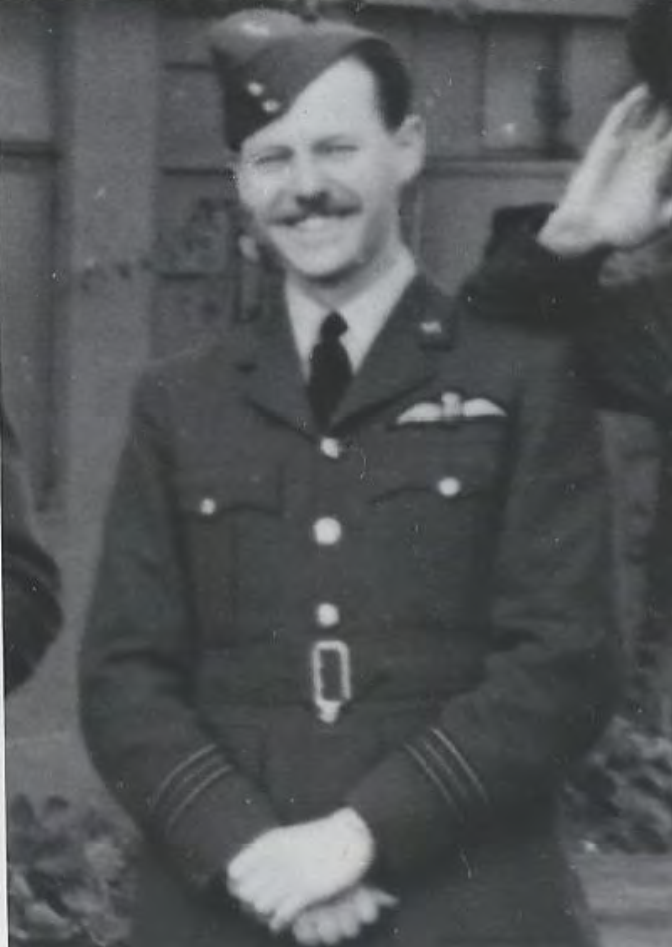

Painting by Barry Wallond of 21 Squadron’s Blenheim V6240 (YH–B), Rusty Russell’s Cousin’s Aircraft, running through Waalhaven just before it Crashed 16th July 1941.
Blenheim Pilots were very lucky if they returned to Base after an Operation & completed a normal landing. The slightest damage to the hydraulic system would lead to complete hydraulic failure & prevent the undercarriage working properly, so a belly landing was the order of the day. Many pilots, such as Tom, treated such arrivals as almost Routine events! But the return to Horsham St Faith after the Flak damage on 14th September (previous paragraph) caught Tom by surprise. Though his wheels locked down OK, as he came over the Aerodrome Boundary & Operated the final stages of Flap, ‘one Wing dropped right down’. At that moment, he did not suspect Asymmetric Operation of the Flaps. Instead, he suspected a malfunction of one of his Engines. He recalls:
‘And I thought, well, it’s only a 2-speed Fine or Coarse Pitch that we had on then – not like a Constant Speed Unit – & I thought that the Pitch had gone. So I opened up the Engine on the side that the Wing was falling – absolutely fully, right through the Boost – but this was giving me Speed when I wanted to be stopping & getting on the Ground. There was no way I could get up & go around because I was going a bit sideways, with 1-Engine fully on & the other just enough to keep me above the Ground. I was running out of Aerodrome rapidly! There was a Bungalow on the edge of the Aerodrome & I can see it now. An old couple lived there & they had an old-fashioned sideboard, with a big mirror on the back & I could see that through the window! Funny what you can see at these times! I said to myself, I’m not going straight into that old couple’s Bungalow. So I switched everything off & went under some Pylons, & put it in a Ploughed Field, the other side of the Aerodrome. Poor old Scotty – he got shaken about in the back. I was all right, but Ralph got thrown down into the Nose & cut his Nose & had other Minor Injuries – he was in Hospital I think 2-days, might have been 3.’
Tom wanted to know what had caused this Accident. He recalls:
‘I was told a couple of days later that the Flaps were operated by a Hydraulic Ram, on the Port side of the Aircraft & when the Ram went down when working the Port Flap, it pulled a Cable over a number of Pulleys, which put the Starboard Flap down the same amount. So this One Ram operated both Flaps. One it was fixed to & the other one worked on these Pulleys! When this Cable had been Hit by Flak, 11-Strands had been broken, leaving just one to operate the other Flap! So when I put the last amount of Flap down, the Pressure on this Cable snapped it & lifted 1-Wing Flap up.’
After consulting the Technical Notes on the Blenheim (Air Publication 1530A), I have to agree with Tom! What an amazing Memory for such detail after all these years! But what a time to get Asymmetric Flaps!
From the 16th to the 26th August 1941, it was the turn of 18-Squadron to ‘detach’ to RAF Manston, an 11-Group Station in Kent & take part in the dreaded Channel Stop. This Operation had been inaugurated in late April, with the intention of closing the Straits of Dover to Enemy Shipping during Daylight.
On 27th August 1941, Tom was back on Circus Operations – 1stly against Lille Power Plant, followed shortly after by an Attack on Mazingarbe Power Station & Chemical Works. On 10th September, another very long (4.40) Shipping Sweep, up to Heligoland Bight, recording the Bombing of a ‘Reporting Vessel‘ – clearly one of those Squealers. Two days later, on a Shipping Sweep of The Hague, Tom was Attacked & chased by 4-Messerschmitt Bf 109s. I suspect that they disengaged when they realised that the man behind the twin-Brownings was none other than Scotty Scotney – who had Shot down one of their number on 14th July!
In August 1941, an Aircraft from No.18 Squadron Flying from Horsham St Faith en Route to Attack a Power Station at Gosnay, dropped a Box by Parachute over the South-west corner of the Airfield at St Omer-Longeunesse, containing a pair of Legs for Wing Commander Douglas Bader who had been shot down over France & had lost his Artificial Limbs in the process.
The next Shipping Sweep, on 14th September 1941, again off The Hague, was even more memorable. Tom attacked a Motor Vessel of 10-12,000 Tons, Escorted by 6-Flak-ships & 3-Messerschmitt Bf 109s. One of the best photographs of the War, in my opinion, was taken of Tom as he squared up for the Bombing run at wave-top height. Tom remembers this Attack vividly:
On 16th, 18th & 20th September 1941, Tom completed Shipping Sweeps off Borkum, Ijmuiden (Hit 1,000-Ton Ship) & Zandvoort (Hit 3,000-ton MV, seen to Explode). His Operations from Horsham St Faith concluded with a Circus on 21st September 1941 – Target, the Power Plant at Gosnay, Northern France.
On 28th September 1941, Tom was promoted to Squadron Leader. As stated earlier – a Meteoric rise, Sergeant to Squadron Leader in just 10-weeks!

No.18 Squadron Officers, Horsham St Faith, 5th October 1941. L to R:
Sqn Ldr Banner, Tony Aldridge, Flt Lt Hervath (Adjutant), Don Smythe (CO), Johnnie Monroe, Tom Jefferson, George Lerwill
Before leaving Horsham St Faith, I need to record a few items of interest. Tom recalls:
‘We had a Line Book in the Mess, at Horsham St Faith & you know, people were always “Shooting a Line” about this & that. The best entry that’s ever been in any Line Book anywhere – & most Squadrons had them – must have been this one. A Chap had been on a hectic Shipping Sweep off the Frisians & he came home & said: “Bugger it! There were 5-Destroyers & I’d only got 4-Bombs!” I’ll tell you a very true story, that happened in the Mess at Horsham St Faith. This took place in one of those standard, beautiful great ante-Rooms. One evening, there was a visiting Air Commodore, whose name was Johnnie Gray, the Station Commander, the Squadron Commander & myself. This was early evening, before Dinner – we were standing in the middle of the Ante-room, having a discussion & all the other Officers were sitting around the outside, respectfully. The discussion was about whether we should do Targets at “High Level” – which then was 12,000-ft – or go in Low. The 18 Squadron CO & I were in favour of going in Low, to get the surprise & better results. The Air Commodore & the Station Commander were wondering whether we ought to try at 12,000-ft. Now 12,000-ft, if you were over Warships, for example, wasn’t very good. So, whether the risk was greater at Low-level, or not – this is what we were talking about. Now, there was an absolutely brand-new acting-Pilot Officer on Probation, who had only arrived on the Squadron about 2/3 days previously & hadn’t Flown 1-Single Trip. He was a very young chap, who’d had 2/3-Pints, which he wasn’t really used to – you know, he hadn’t got really broken in. Well, he saw us standing there & he ambled across, with his Mug like this not unlike Turner, when he Buttonholes the AOC in the Film Reach for the Sky!. He listened for 2/3-mins & said: “I agree with you, Sir!”, digging the Air Commodore in the Ribs & slopping Beer over his Uniform!
“You know, we 1-Ringers must Stick together!”
He’d got the little tiny & barely discernible! Ring of an Acting Pilot Officer & the Air Commodore had got his Great Big One! Well, of course, he was Marched Off! But the Air Commodore was a good bloke, actually – Johnnie Gray – & the next morning, this Chap went in to see the Station Commander, who only gave him a mild Strip & told him how he ought to behave in the Mess¸ especially to Air Commodores! That was it – he just went on & nothing else was said!’
Finally, I can’t leave this out of the Horsham St Faith Period. Whilst looking at an informal photo of 18 Squadron, my wife Carol picked out the slim figure of Tom. I think she was being serious when she asked Tom:
Were there enough Rations? I mean, why are you so Slim? During that Wartime, was there a great shortage?‘ After the laughter had died down, Tom replied: ‘I didn’t get fat until long after the War!’
From the 16th to the 26th August 1941, it was the turn of 18-Squadron to ‘detach’ to RAF Manston, an 11 Group Station in Kent & take part in the dreaded Channel Stop.
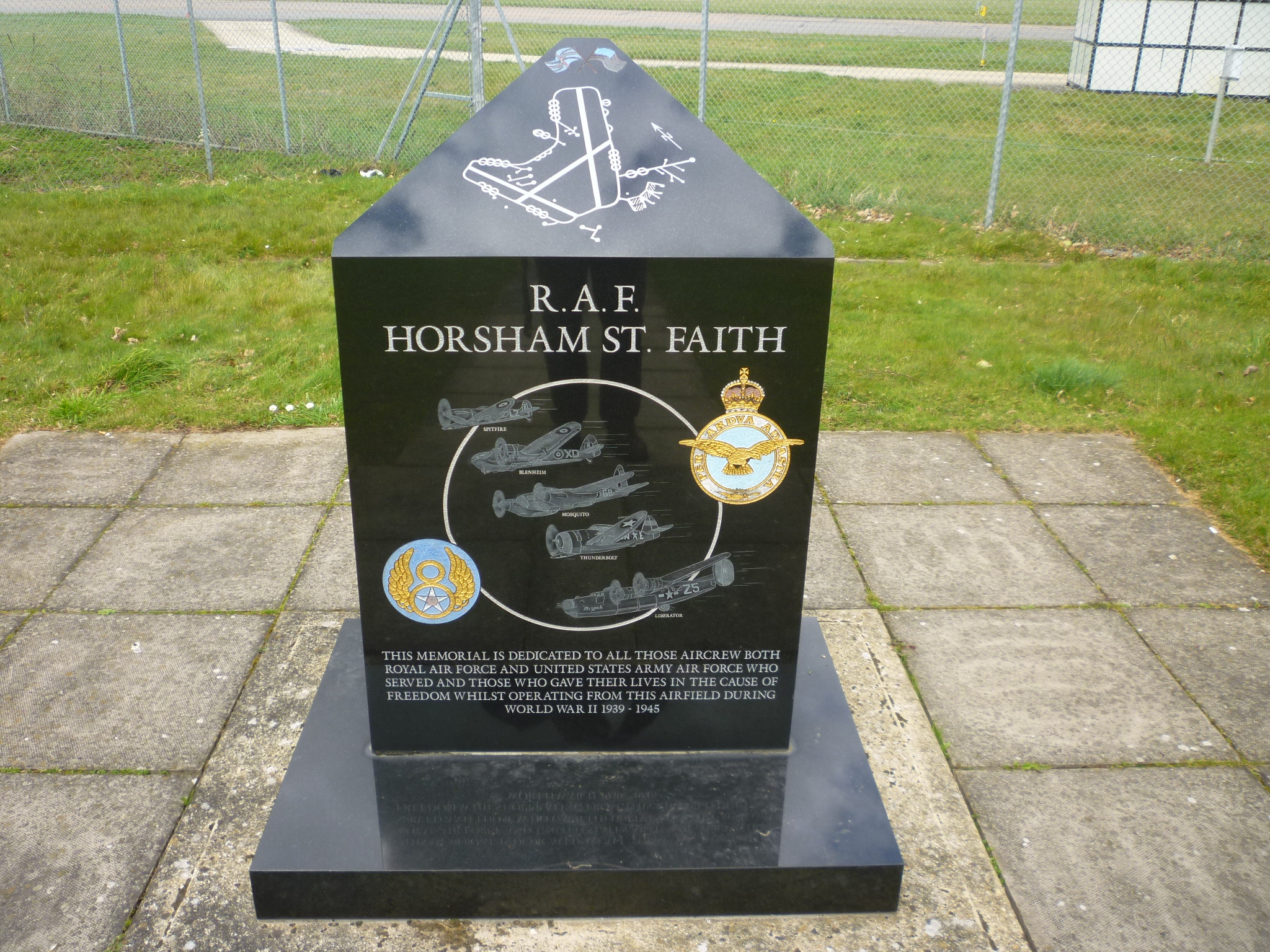
The brain-child of Christine Armes, 300-People (including USAF & RAF ex-Service Personnel) attended the dedication of Black Granite Memorial near Norwich Airport Terminal, the Work of Stonemason’s H L Perfitt. It names all Squadron’s Based at RAF Horsham St Faith, and images of 5-Aircraft, including the Bristol Blenheim.
